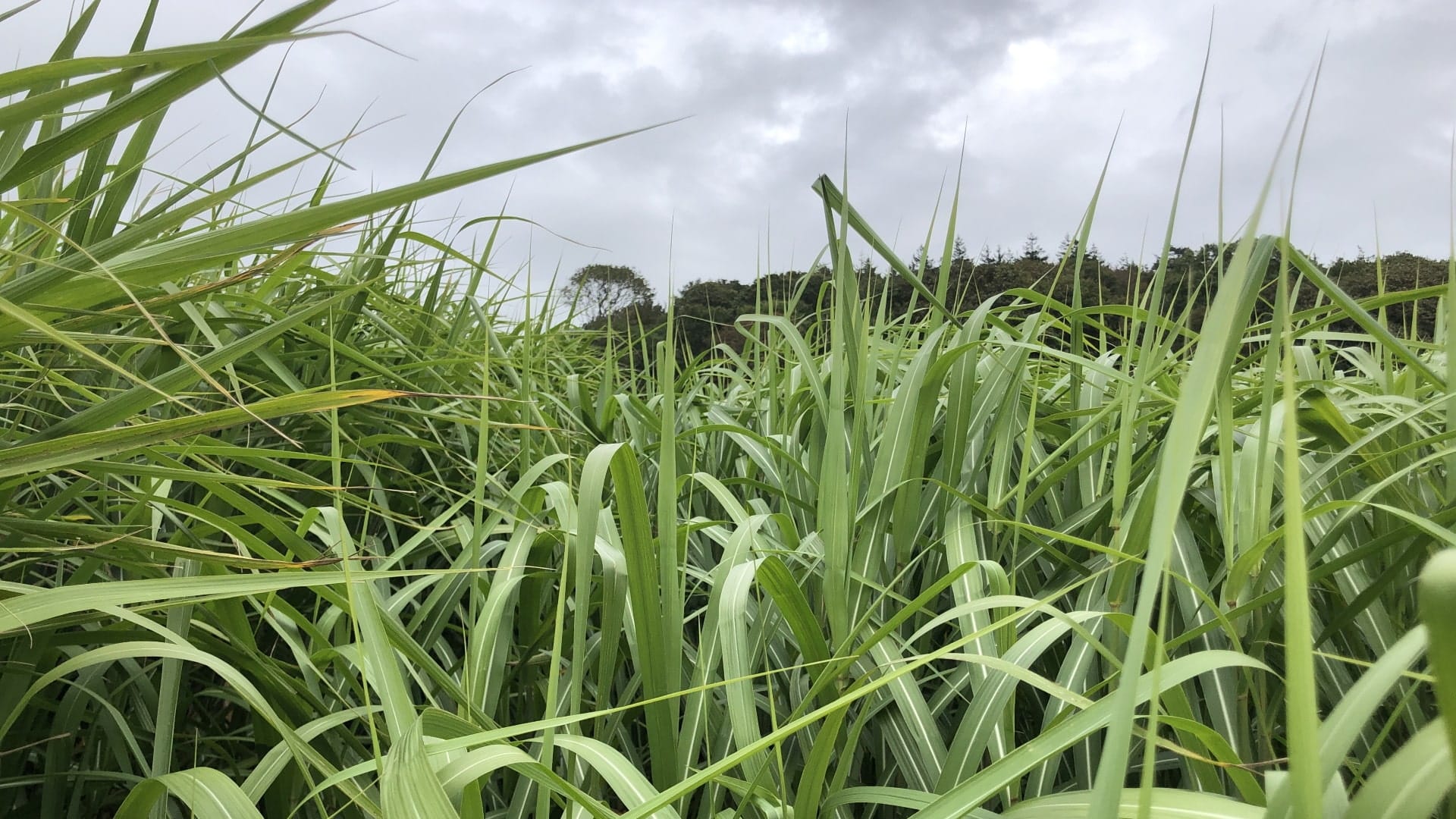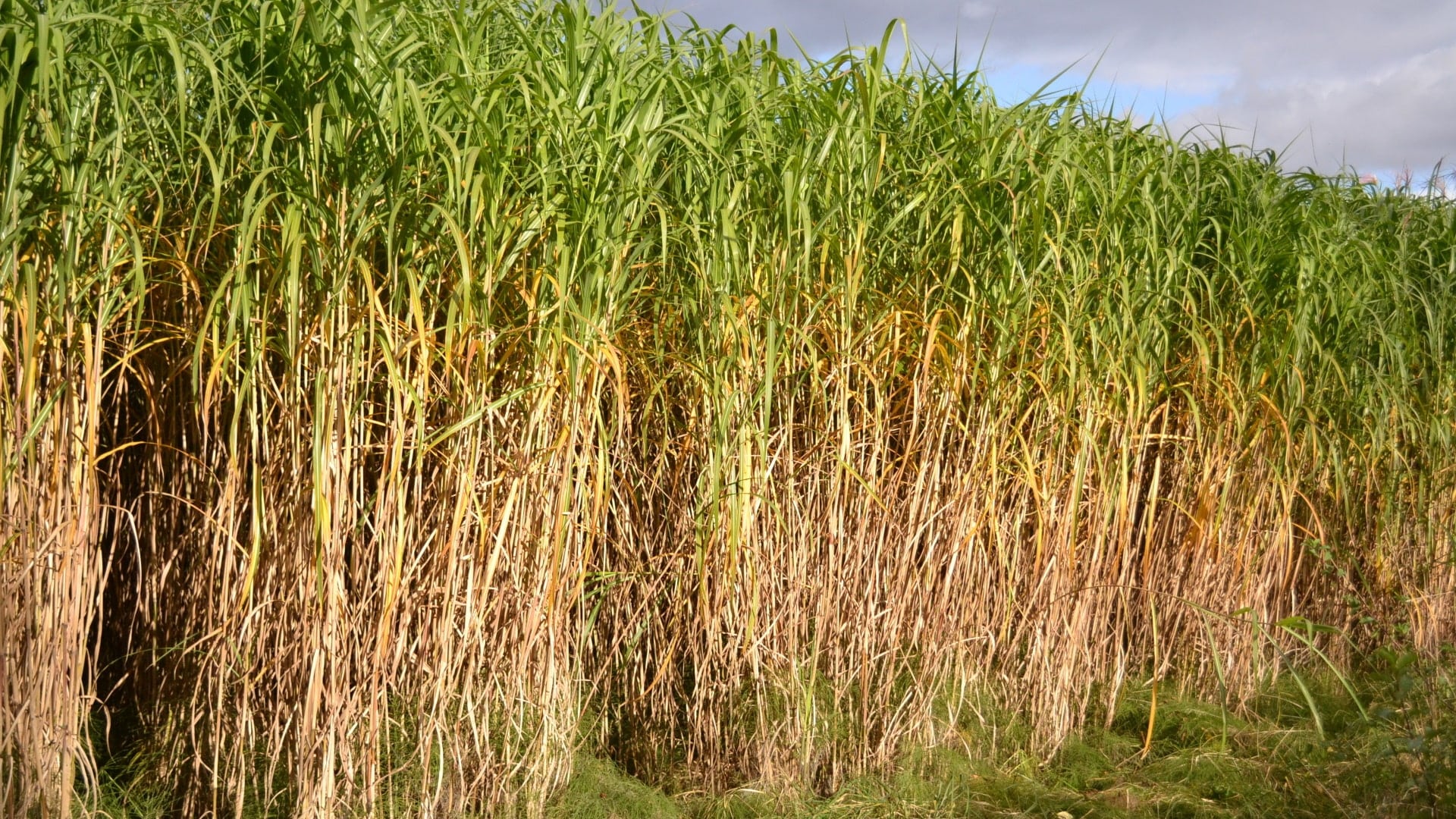Miscanthus
General info
Miscanthus is a perennial, rhizomatous grass native to Southeast Asia. The genus comprises multiple species of diverse morphologies, including ornamental grasses used in the UK for 100 years. More recently, the hybrid Miscanthus × giganteus was noted for its exceptional productivity. This led to trials in multiple European locations, where it has demonstrated high yields from low inputs across multiple environments, with annual harvests for up to 20 years from a single planting. M. × giganteus is a sterile hybrid of Miscanthus sinensis and M. sacchariflorus. These species and their hybrids have been identified as leading candidates for the provision of biomass for bioenergy and bioproducts.
Current markets in the UK predominate around heat and power, and high-quality animal bedding, but potential end uses are considerable, including the extraction of high value products. Other uses include packaging, reinforcing fibre for plastic or cement-based components, or as insulation.
Cultivation and agronomy
To date, establishment of Miscanthus has relied on sterile hybrids such as M. x giganteus, which are clonally propagated, generally from rhizome. Seed based hybrids that are established from plug plants offer an alternative establishment method and are currently being developed alongside other alternative clonal establishment methods, but rhizome remains the standard establishment method. Rhizomes are planted into land that has been ploughed and cultivated. It is important to limit competition from weeds in year 1 commonly through timely application of herbicides, but from year 2 onwards the requirement to manage weeds should be limited.
Miscanthus produces new shoots annually, emerging when soils warm in spring and forming erect, robust stems (similar to bamboo canes) reaching up to 3 metres or more in a mature stand. Miscanthus can be harvested annually from the second year, it is harvested in late winter once it has senesced and has dropped most of its leaves and can be harvested directly as chip or cut, swathed and baled. Full yield is not usually achieved until years 3-4 when the crop has established sufficient rhizome to produce a dense canopy that maximises light interception, and therefore yield. Average yield of well-established mature crops is 10-12 tonnes per hectare per year, and can reach up to 18 tonnes.
Return to crops overview
Relevant research
Clifton‐Brown, J., Harfouche, A., Casler, M. D., Dylan Jones, H., Macalpine, W. J., Murphy‐Bokern, D., … & Lewandowski, I. (2019).
Breeding progress and preparedness for mass‐scale deployment of perennial lignocellulosic biomass crops switchgrass, miscanthus, willow and poplar. Gcb Bioenergy, 11(1), 118-151.
Biomass Connect Trials
A Miscanthus varieties trial and a Miscanthus x giganteus trial are currently being grown as part of the Biomass Connect Project at the following hub sites
- AFBI Hillsborough
- BGI Chesham
- IBERS Aberystwyth
- NIAB Headley Hall
- Newcastle University Cockle Park Farm
- Rothamsted Research North Wyke
- SRUC Ayrshire
- SRUC Edinburgh
In addition, we have Miscanthus Athena growing at:

